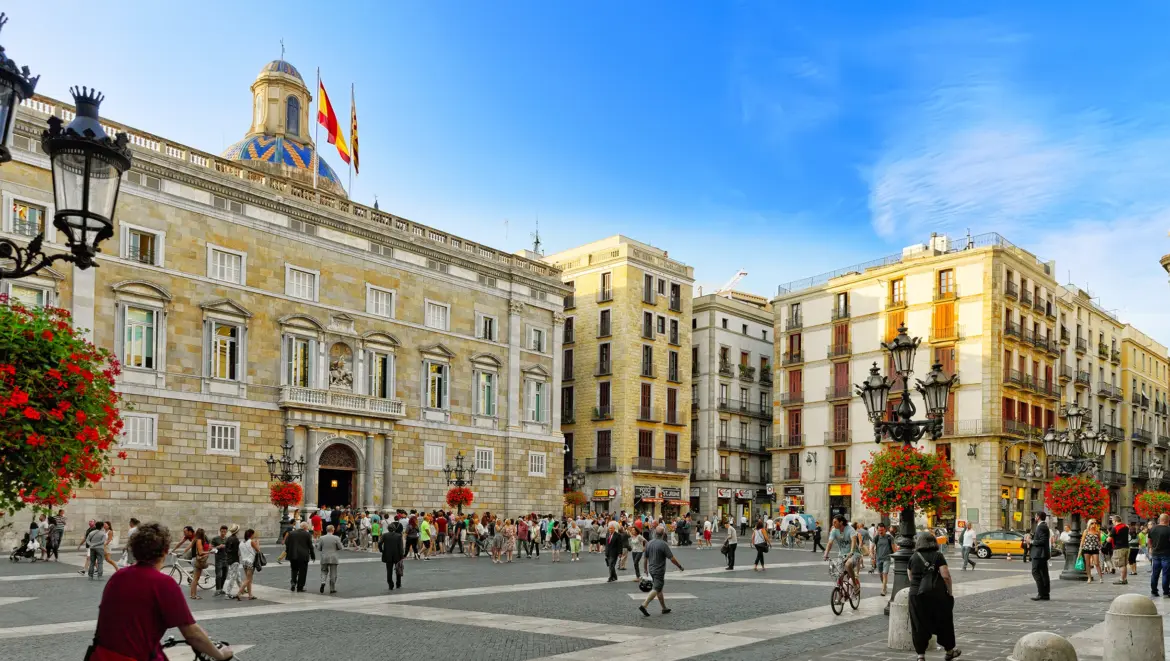Hola, world travelers! Today, we’re stepping into Plaça de Sant Jaume, the political and historical heart of Barcelona. Nestled in the Gothic Quarter, this elegant square may seem simple at first glance – open, symmetrical, framed by grand façades – but beneath its calm surface lies two thousand years of history. This is where the Roman Forum of Barcino once stood, where medieval and modern powers found their home, and where Catalonia still gathers to celebrate, protest, and remember. Every stone, every balcony, every ripple of the flags above speaks of continuity. It’s one of those rare places where the city’s ancient past and living present meet in full view, a quiet stage that has witnessed triumphs, revolutions, and rebirth.
The Beating Civic Heart of Barcelona
Few places capture Barcelona’s layers like Plaça de Sant Jaume. In Roman times, this very spot was the forum of Barcino, where merchants traded, officials debated, and citizens assembled under the Mediterranean sun. The Cardo Maximus and Decumanus Maximus, the main north-south and east-west streets, intersected right here, making it the literal and symbolic center of the ancient colony. As centuries passed, new powers rose and new buildings were built atop the old. The medieval city embraced its Roman foundations, turning the forum into the seat of government and faith. Even today, as you stand in the middle of the square, you’re walking across invisible layers – Roman, Gothic, Renaissance, and modern – all coexisting in harmony.
The square’s current design dates largely to the 19th century, when Barcelona began to modernize and open up its medieval streets. Yet it has never lost its sense of ceremony. The air still feels heavy with importance, whether it’s the fluttering flags, the rhythmic echo of footsteps on stone, or the solemn presence of the two great buildings that face each other across its open space.
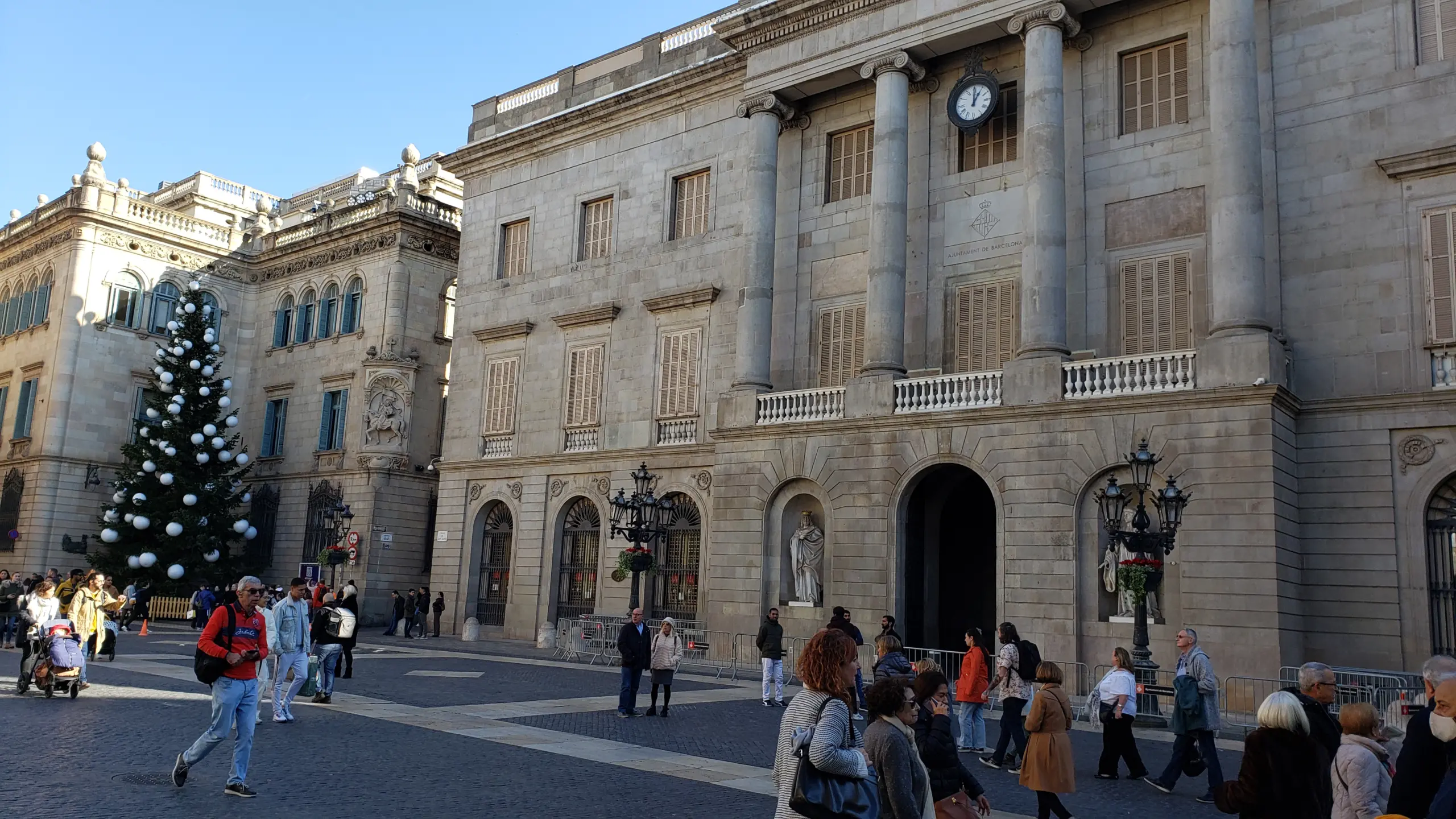
Facing Power: Palau de la Generalitat & City Hall
On one side rises the Palau de la Generalitat de Catalunya, an architectural gem that blends Gothic strength with Renaissance grace. The palace’s earliest section dates to the 15th century, when Catalonia’s governing body established its home here. Its sculpted façade on Carrer del Bisbe, adorned with delicate arches and the shield of Saint George, reflects the region’s enduring pride and independence. Step inside, and you’ll find serene courtyards, marble staircases, and ornate ceilings that whisper of centuries of politics, art, and identity.
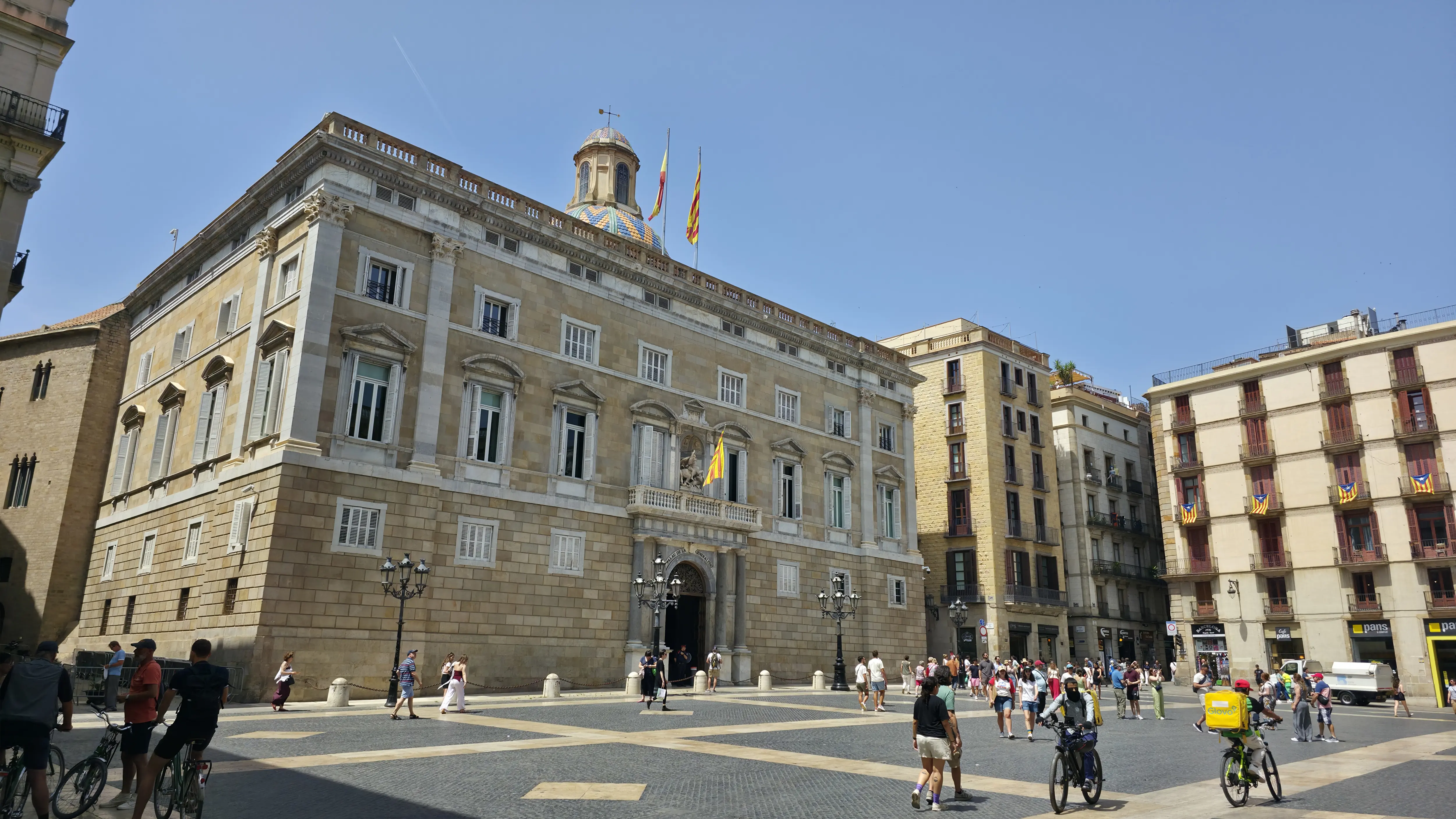
Facing it, the Ajuntament de Barcelona (City Hall) presents a very different personality: elegant, symmetrical, and dignified in its neoclassical style. Originally built in the 14th century but remodeled in the 19th, its columns and pediment give it a serene authority. Together, these two buildings tell a story of balance: local governance versus regional power; Gothic introspection versus Enlightenment order.
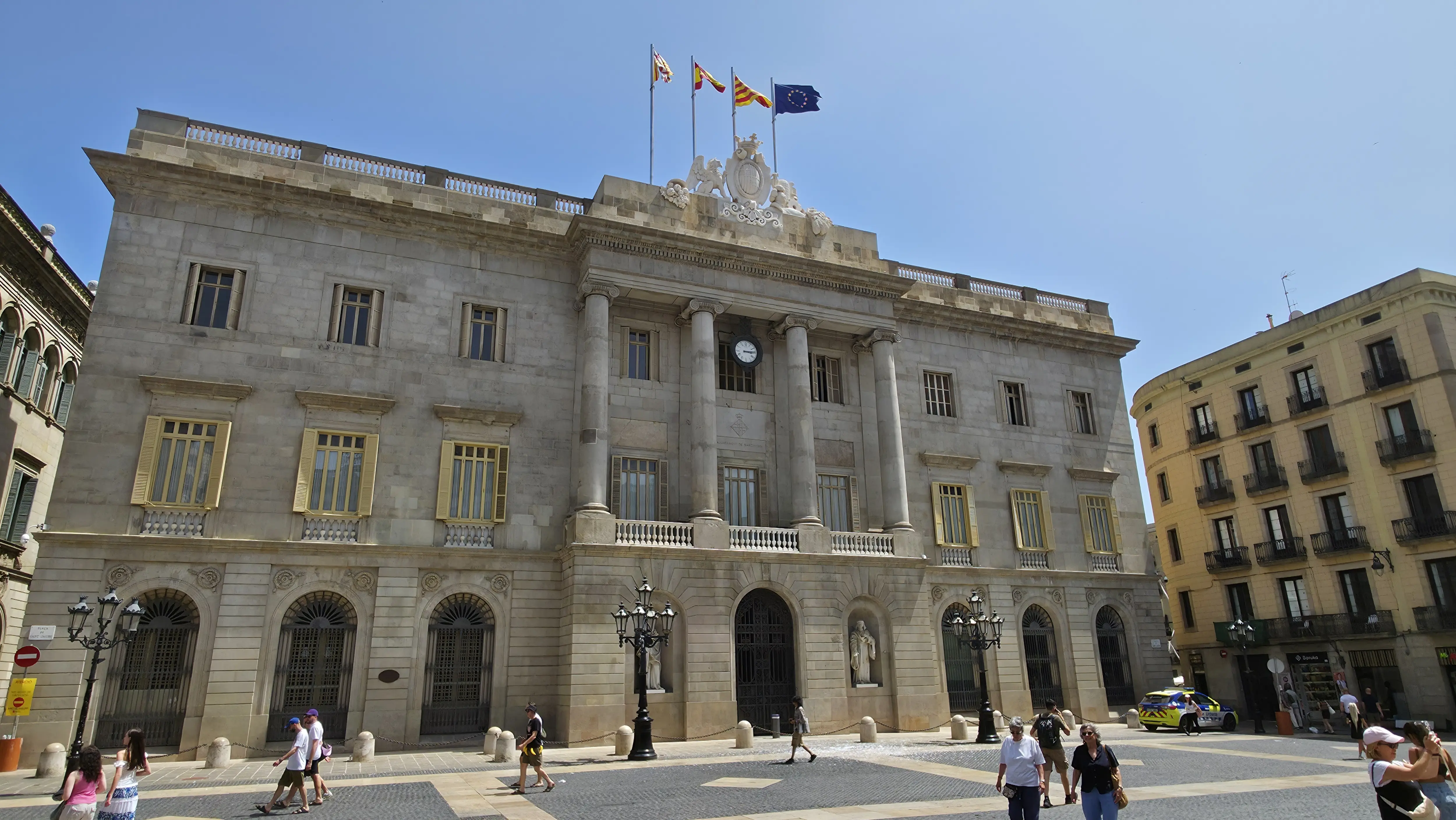
Standing between them, you can almost feel an invisible dialogue, a conversation between two Barcelonas: old and new, civic and national, both anchored to the same stones.
History in Motion
Plaça de Sant Jaume isn’t a museum piece, it’s alive. Over the centuries, it has been the backdrop for some of Barcelona’s most defining moments. In the Middle Ages, processions and festivals animated its cobbled ground. During Franco’s dictatorship, it became a silent witness to repression, and later, a jubilant space of rebirth when democracy returned. Even today, it remains the city’s political stage. When Catalonia votes, protests, or celebrates, it’s often here that people gather – waving senyeras (Catalan flags), singing anthems, and filling the square with hope or resistance. During the city’s Festes de la Mercè, the square becomes a theater of human towers (castellers), concerts, and light shows.
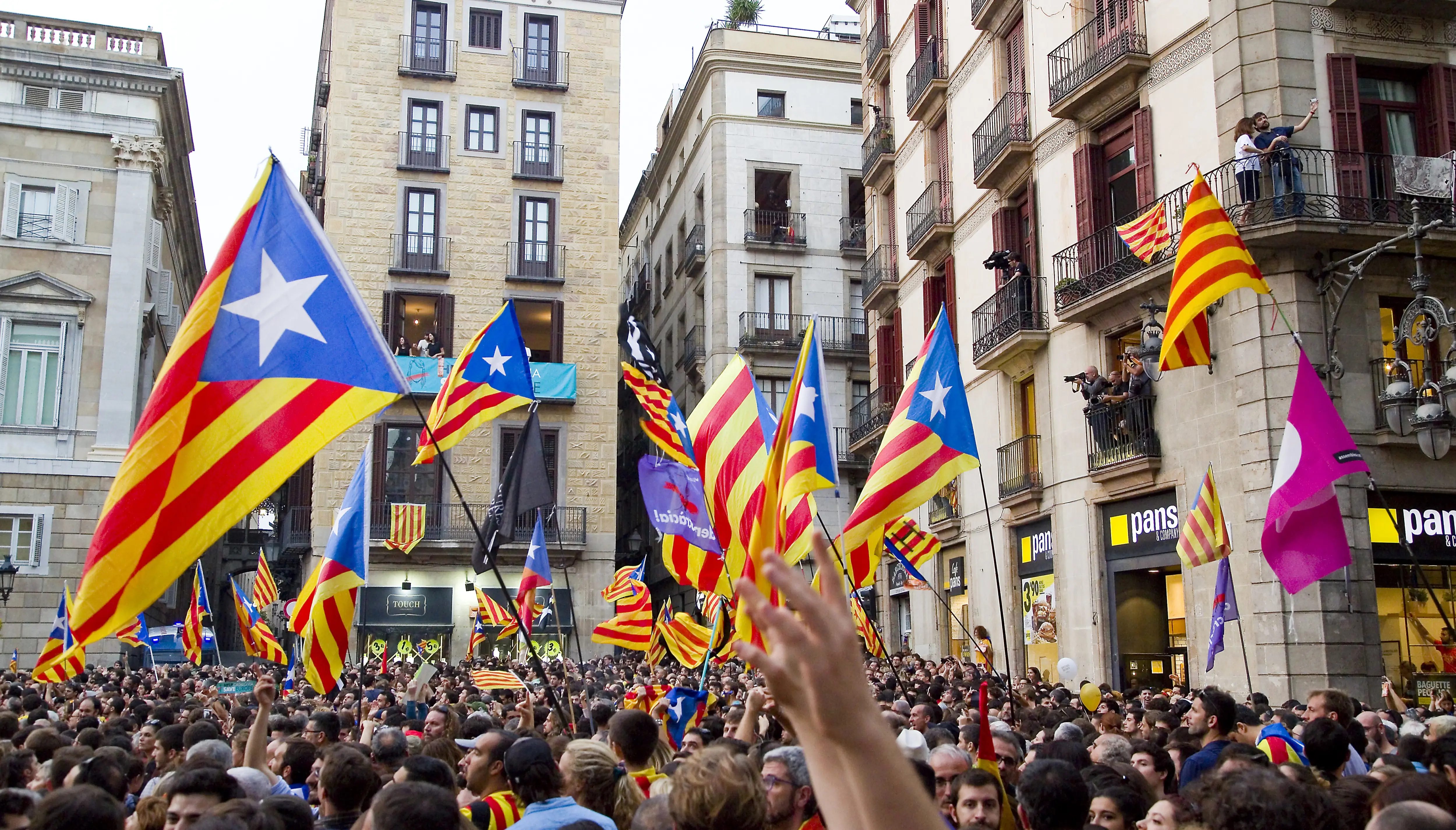
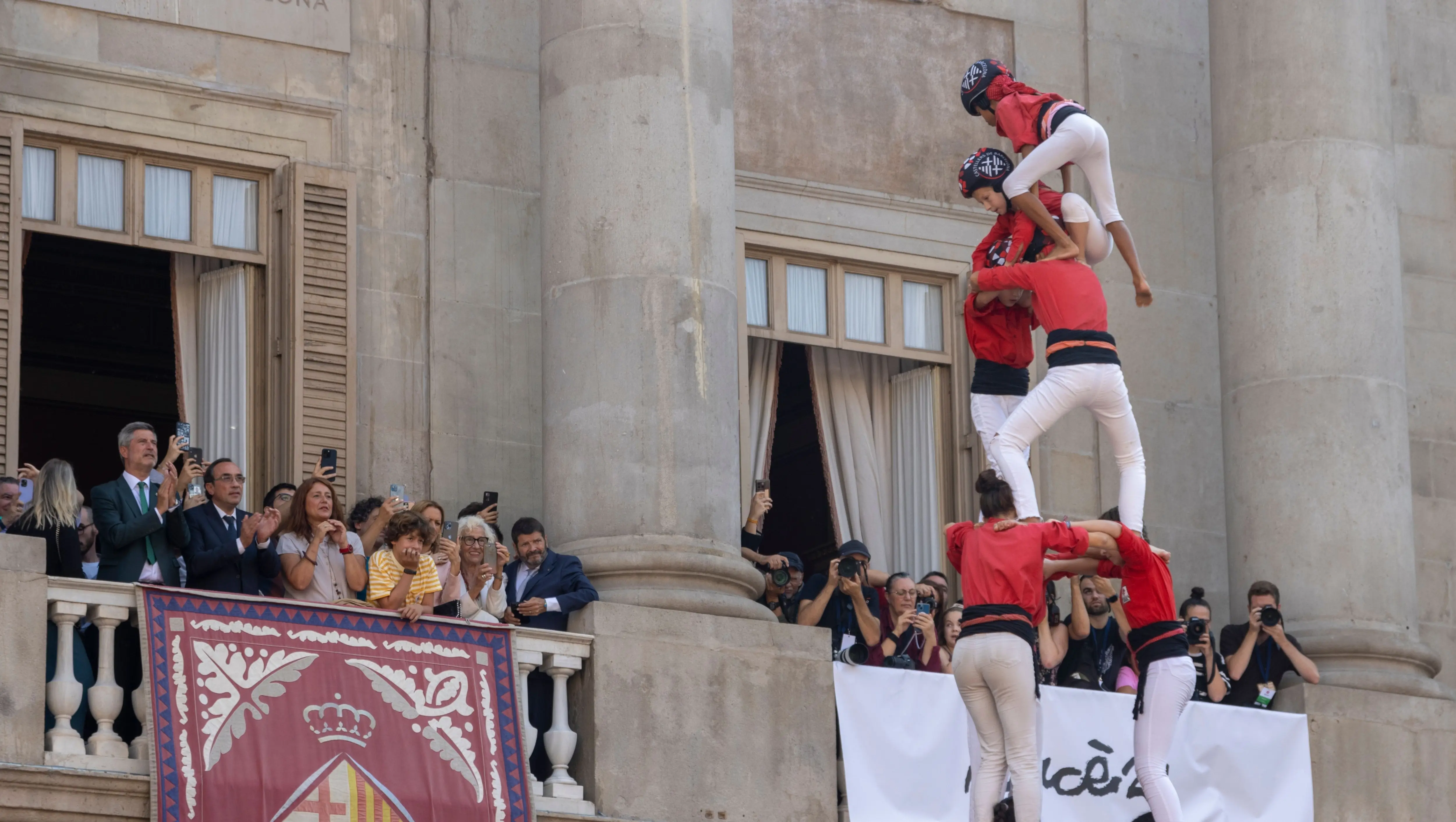
And yet, on quieter days, there’s peace. You might see a street musician playing a soft melody, pigeons fluttering above, and locals pausing to rest in the golden light. That’s the magic of Plaça de Sant Jaume, it breathes with the rhythm of the city itself.
Through My Eyes
When I visited Plaça de Sant Jaume, it was one of those luminous afternoons that Barcelona does so well – sunlight spilling over the façades, flags stirring gently in the breeze. I stood in the middle of the square, imagining the layers of time beneath my feet: Roman merchants haggling, Gothic nobles arriving by carriage, modern Catalans chanting for democracy. I remember tilting my head back to take in the symmetry of the façades – the warm honey tones of the City Hall, the ornate windows of the Generalitat – and thinking how this square carries dignity without grandeur. It doesn’t try to impress; it simply exists, steady and sure, the city’s anchor through centuries of change.
As I left through Carrer del Bisbe, sunlight streaming through the famous neo-Gothic bridge, I glanced back and saw children chasing pigeons where once history was written. It struck me as one of those quietly profound travel moments, when a place doesn’t need to shout to be unforgettable.
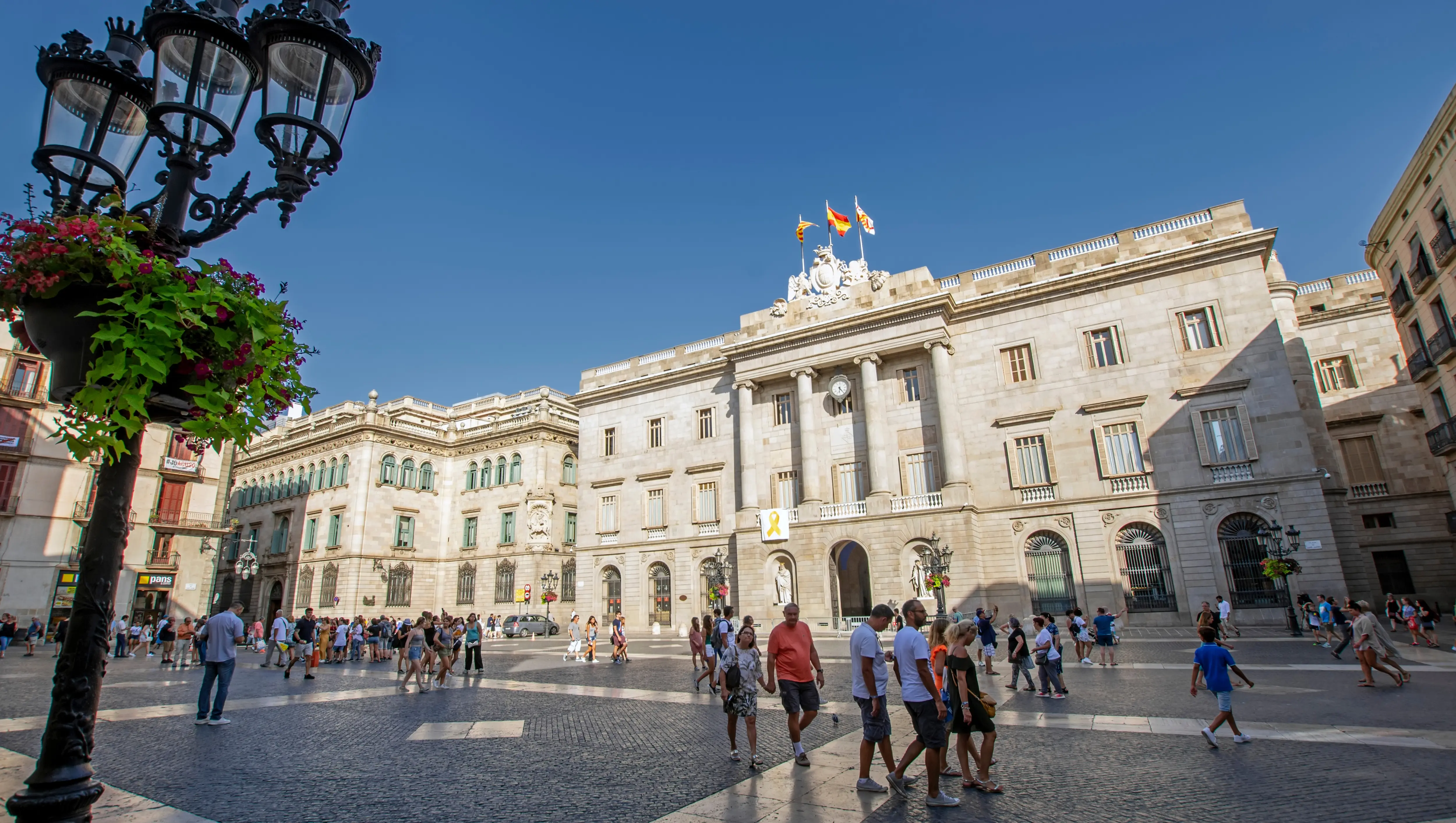
Bubbly Tips
- How to Find It: Plaça de Sant Jaume sits in the Gothic Quarter, bordered by Carrer del Bisbe, Carrer de Jaume I, and Carrer Ciutat. It’s just a few minutes’ walk from the Barcelona Cathedral and La Rambla.
- Best Time to Visit: Visit around 5-6 PM, when the light softens and shadows stretch elegantly across the square. Early mornings are also beautiful if you prefer a quieter atmosphere.
- Photography Tip: Stand slightly off-center to capture the symmetry of the two government façades with fluttering flags or frame your shot through the Carrer del Bisbe arch for a postcard-perfect view.
- Pair It With: After exploring the square, stroll down to Plaça del Rei or the Barcelona Cathedral cloister.
Final Thoughts
Plaça de Sant Jaume isn’t a place of spectacle, it’s a place of meaning. It’s where Barcelona governs, remembers, and gathers. From Roman Forum to Gothic square to democratic heart, it embodies the city’s resilience and rhythm.
If you pause here long enough, you’ll feel it too – the quiet hum of continuity, the weight of history softened by sunlight and laughter. This isn’t just where politics happen; it’s where Barcelona lives and breathes.
Have you ever visited Plaça de Sant Jaume? Did you feel its quiet power or stumble upon a celebration here? Share your thoughts below, I’d love to hear your impressions!
xoxo,
Bubbly 💕

